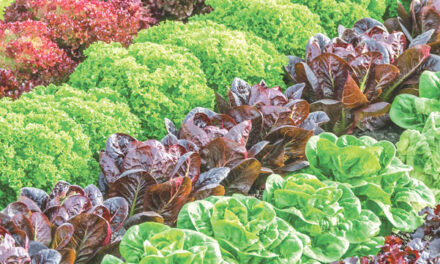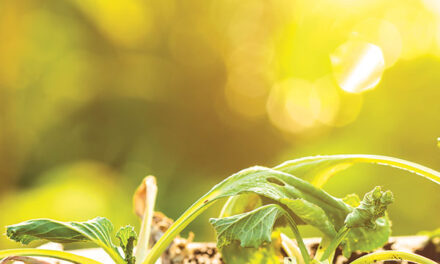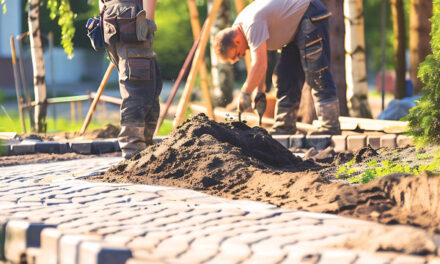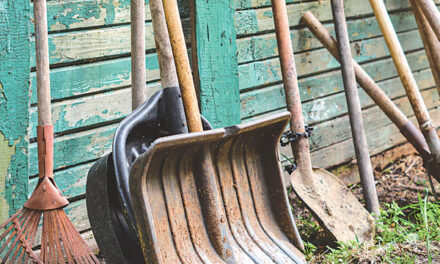After scouring nursery shelves for plants and seeds, and spending a few months anticipating the perfect sweet pepper or magnificent melon, guessing when it is ripe can backfire. Harvesting homegrown edibles too soon or late means biting into something inedible.
Sacramento’s summer flavor jackpot begins with timely harvesting and is extended with proper storage. There are clues to help avoid a disappointing mouthful.

Melons can confound even experienced gardeners. At farmers markets and grocery stores you may see shoppers knocking or thumping with fingers on watermelons in hopes of hearing that satisfying hollow sound of ripeness. How well you thump and hear dictates success or failure.
Forego the thumping and search for a buttery-yellow spot on the side of the watermelon. In the garden, the buttery-yellow spot will be on the side touching the soil. If the spot is more white than yellow, keep looking. A dried tendril in homegrown watermelons is another indicator of ripeness. The tendril is a curly ribbon of vine located on the stem nearest the watermelon.
Muskmelons, which are commonly lumped into the category “cantaloupes,” merely slip off the vine when mature. Give the muskmelon a gentle tug and it will release from the vine with a musky fragrance.
Honeydew melons are the most difficult to judge. They do not slip off the vine when ripe. Some varieties turn yellowish when ripe. If the blossom end (opposite the stem end) becomes soft, it may be ready to eat.
Most vegetables ripen best on the plant. Harvesting in the early morning allows for optimum flavor. Moisture accumulation and starches that convert to sugars overnight will produce sweeter, juicier bites.
Rather than twisting and pulling vegetables, use sharp scissors or hand pruners to cut stems and harvest. Frequent harvesting will prolong the seasonal harvest. There is no reason for the plant to continue producing if mature vegetables are not picked.
The following tips will help determine when to harvest and how to store other popular summer edibles.
Tomatoes: Fully colored and firm to the touch is best. However, tomatoes may feel mushy before fully ripened when temperatures are 90 degrees and above (Sacramento summer weather!). Tomatoes do not require sunlight to ripen and will fully ripen on the kitchen counter at room temperature. Use ripe hybrid varieties within a week. Heirloom varieties have thinner skins and usually need to be eaten within a few days. Refrigerated tomatoes lose some flavor and texture.
Sweet peppers: Allow them to turn from green to orange, yellow or red (the sweetest). The pepper walls should be firm. They will store for a couple of weeks if refrigerated in a perforated plastic bag.
Snap beans: When pods “snap” easily when bent, it’s time for beans. Snap beans are best eaten the day of harvest, but will last a couple of days when refrigerated.
Summer squash: Check daily as squash grow surprisingly fast—and big. Squash should be shiny in appearance. Try to harvest when on the small side. Smaller squash are more flavorful. They will keep about a week bagged in plastic and refrigerated.
Cucumbers: Overgrown cucumbers will be woody and tough. Pick most slicing varieties when they reach 6 to 8 inches long and no more than 2 inches thick. Supermarket cucumbers are covered in an edible shiny wax that turns them bright green. Homegrown cucumbers will be a lighter green when mature. Cucumbers will store in a perforated plastic bag in the vegetable crisper for up to a week.
Berries: Raspberries and blackberries change color from shiny to dull when ripe. If you “tickle” blueberry clusters, ripe berries will release into your hand. Strawberries will not ripen after being picked. Look for strawberries that are completely red. Do not wash berries before refrigerating in plastic bags or baskets unless you enjoy moldy berries. Rinse berries right before eating.
For canning, freezing, dehydrating and other long-term storage information, visit the UCCE Master Food Preservers of Sacramento County website at sacmfp.ucanr.edu.
Dan Vierria is a University of California Cooperative Extension Master Gardener for Sacramento County. He can be reached at masterg29@gmail.com. For answers to gardening questions, contact the UCCE Master Gardeners at (916) 876-5338, email mgsacramento@ucanr.edu or visit sacmg.ucanr.edu. Follow us on Facebook, Twitter and Instagram: @insidesacramento.















